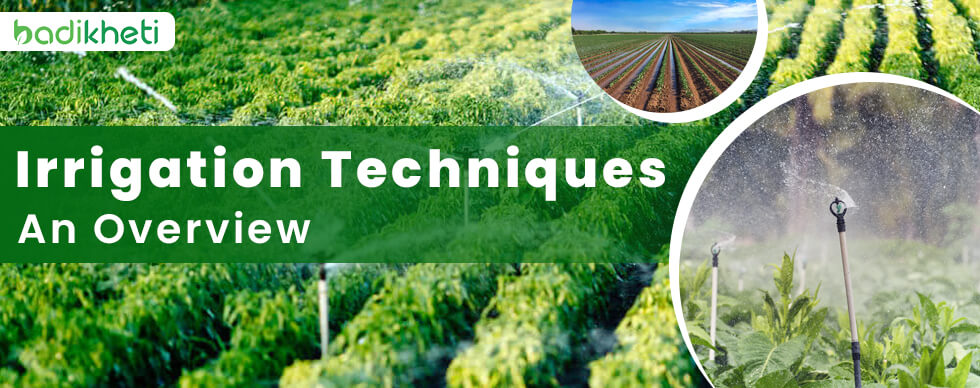
The Indian economy is based on agriculture, and the farmer’s livelihood relies on the rain in monsoon season. But it isn’t certain, so depending entirely on it may affect soil management and agricultural yields. Crops need a proper quantity of water for their development. The only means our farmers can keep storing and using water properly is via irrigation. In this blog, we will understand the irrigation methods for excellent water management for Indian farmers.
Undoubtedly, the world’s agricultural area has increased in the past, but India has witnessed stagnation because of changes in weather patterns, land usage, and declining farm earnings. Hence, Indian farmers should take care of their irrigation practice because then only the seeds would grow into fruitful yields.
Changing weather patterns and variable rainfall have also contributed to a significant increase in the area under irrigation, with the majority coming from groundwater extraction. Also, the water cycle is heavily strained in India. Given these factors, it is essential to investigate sustainable water management practices for irrigation.
Below are some effective measures for using an irrigation system that will help you save water for your fields:
The first irrigation techniques used by humanity were surface or flood irrigation systems. A surface irrigation system uses runoff from a water source, generally a canal, to flood a planted area. Water flows through fields because they are graded to slope away from water sources gradually, or they could even be on terraces. Typically, crops are planted in parallel beds to allow water to run through the plant roots below freely.
It is among the best agritech in farming to water crops with the least waste. To effectively regulate water consumption and prevent needless watering, water flow meters can precisely determine the water used for irrigation.
Drip irrigation also determines the volume of water used for irrigation for a certain period by using the flow rate obtained from a flowmeter. Hence, this enables easy identification of irrigation system issues, such as expensive leaks.
This method uses an irrigation system instead of hoses or pipelines to move the water away from the source. The furrows and pits between the ridges that host the crops are used for irrigation for various crops. A tiny dike of soil is cut to allow lateral water into each furrow, creating an entrance into the soil. The water supply is stopped by shutting the deck once again when the water level in each furrow reaches the specified level. But for high-value crops like veggies, it may make sense.
Water scarcity will be a serious concern in the future, and changing weather conditions will affect crop yields. So, an effective irrigation system for water management is essential for farmers in India since it boosts yield production which lead to economic development.
Also, where effective water and soil management is important, investing in organic ways to plant your crops is important. The best way is to buy organic seeds online as they are drought-resistant and have much deeper roots to access soil water effectively.
Introduction Chilli fondly known as "Mirchi" in Hindi holds great cultural and historical significance in India. It is not merely a culinary delight but an integral part of our traditions with significant links to agriculture and daily life. India takes great pride in being one of the leading producers and consumers of chillies globally, with various regions contributing to this spicy farming. This article aims to analyze the primary states involved in chilli cultivation within India, exploring their unique functions within the flourishing chilli industry....
Spices constitute an essential element of Indian gastronomy, imparting richness, and piquancy to an array of recipes. Among them, a distinct position is held by chili peppers, which however face consistent threats from various diseases that can cause severe damage to crops. Disease-resistant chili seeds have lately emerged as a revolutionary alternative to safeguard chilli farming in India. This write-up explores the prospective benefits of these types of chilli seeds and their significant impact on the future of Indian spice agriculture. The predicament of diseases...
To cultivate organic winter crops successfully, it is of utmost importance for the farmer to adopt a systematic approach. This requires the farmer to play the dual role of both a custodian and a practitioner. To achieve a flourishing winter harvest, several recommendations have been proposed based on practical experience and tailored to facilitate effective rabi season vegetable cultivation within India's agricultural framework. Moreover, the foremost of all the benefits of growing organic vegetables is that it restores the ecosystem as well as is a...